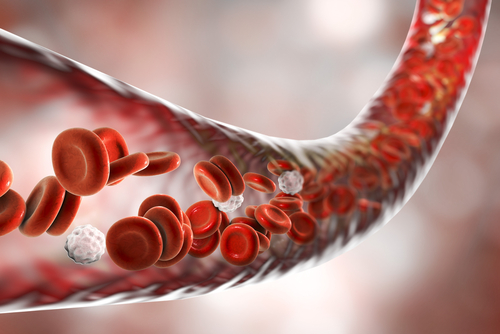Endometriosis and recurrent pregnancy loss are two newly discovered risk factors for the development of venous thromboembolism during pregnancy and post-partum, according to a Japanese study.
The study, “Endometriosis and Recurrent Pregnancy Loss as New Risk Factors for Venous Thromboembolism during Pregnancy and Post-Partum: The JECS Birth Cohort,” was published in the journal Thrombosis and Haemostasis.
Venous thromboembolism (VTE) is one of the main causes of maternal mortality. It can develop during pregnancy or post-partum after a blood clot forms in the deep veins of the leg, groin, or arm, and travels in circulation, sometimes lodging in the lungs.
Several guidelines recommend that pregnant women considered to be at high risk for VTE use low molecular weight heparin as a preventive measure.
Women who have had a past episode of VTE or thrombophilia (an abnormality in blood coagulation leading to clots in blood vessels), as well as those with an episode and a history of VTE in a first-degree relative, are currently considered to be at the highest risk.
Furthermore, a study of birth registries in England and Sweden identified the strongest predictors for post-partum VTE: emergency caesarean sections, stillbirths, varicose veins (veins that become enlarged and twisted), pre-eclampsia (the onset of high blood pressure during pregnancy), and post-partum infections.
In this study, Japanese researchers used data from a nationwide population-based birth cohort study known as the Japan Environment and Children’s Study (JECS) to evaluate risk factors that could contribute to the development of VTE in pregnant and post-partum Japanese women.
“It was considered necessary to examine these factors because the frequency of VTE is smaller in Japanese populations than in Caucasian populations and the frequency of thrombophilia depends on race,” the researchers wrote.
The JECS study included data from 103,070 pregnant Japanese women, which was collected between January 2011 and March 2014. The subjects were asked to complete questionnaires in the first and second/third trimester, and their medical records were transcribed just after delivery and one month later.
First, researchers found that the frequency of VTE in the Japanese population was 7.5 per 10,000 pregnancies during both the pregnancy and post-partum period.
Researchers then discovered different risk factors for the development of VTE, which included older maternal age, high body mass index, the use of in vitro fertilization and embryo transfer, being a smoker and income levels. These risk factors had been found in previous studies.
However, after adjusting for multiple confounders, researchers discovered two new predictors for VTE: the presence of endometriosis and recurrent pregnancy loss.
In fact, researchers found that women with endometriosis had a 2.70-fold higher risk of developing VTE, while women who had experienced recurrent pregnancy loss were at a 6.13-fold higher risk.
Additionally, the risk of abortion and pre-term birth, pre-term birth, and caesarean section were also found to be significantly associated with VTE.
“Endometriosis and a history of RPL (recurrent pregnancy loss) were found to be novel risk factors for VTE,” the authors stated, noting that endometriosis affects 6% to 10%, while RPL affects 4.2%, of women of reproductive age.
“Consequently, we should pay careful attention to novel predictors, such as endometriosis and RPL, to prevent VTE in pregnant women,” they said.

